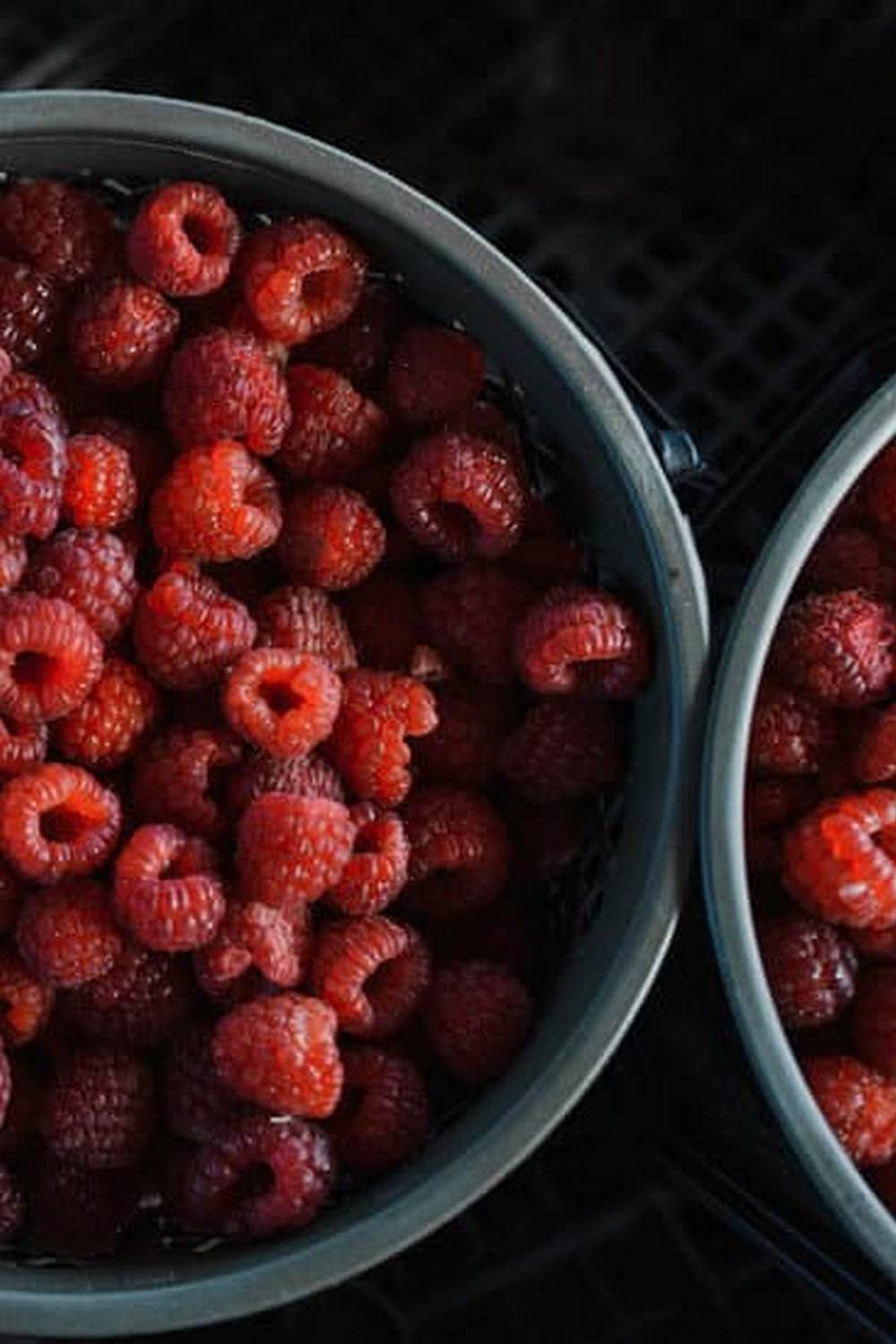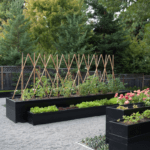High rise vegetable gardens offer a creative solution to the challenges of urban gardening, allowing city dwellers to cultivate their own fresh produce amidst the concrete jungle. These innovative gardens utilize vertical space to grow a variety of vegetables, herbs, and fruits in high-rise settings, providing numerous benefits for urban environments.
From maximizing space utilization and promoting accessibility to enhancing the aesthetics of city landscapes, high rise vegetable gardens have gained popularity as a sustainable way to bring greenery into bustling cities.
One of the key advantages of high rise vegetable gardens is their ability to make efficient use of limited space in urban areas. By vertically stacking plants in containers or on structures like trellises and towers, these gardens enable individuals to grow their own food even in small apartments or balconies. This not only promotes self-sufficiency but also reduces the need for long-distance transportation of produce, contributing to a more sustainable lifestyle.
When it comes to choosing the right vegetables for a high rise garden, factors such as sunlight exposure, available space, and maintenance requirements play a crucial role. Selecting crops that thrive in confined spaces and do not require extensive care can help ensure a successful harvest.
With proper planning and careful selection of vegetables suited for vertical gardening, individuals can create vibrant and productive high rise vegetable gardens that not only yield fresh and nutritious produce but also add beauty and vitality to urban landscapes.
Benefits of High Rise Vegetable Gardens
High rise vegetable gardens offer a multitude of benefits that make them an attractive option for urban environments. One of the key advantages is space utilization – in densely populated cities where land is at a premium, high rise gardens provide a way to grow fresh produce vertically, maximizing the use of available space.
By utilizing balconies, rooftops, or specially designated areas within high-rise buildings, residents can transform underutilized spaces into green oases that not only provide food but also contribute to a healthier environment.
Accessibility is another significant advantage of high rise vegetable gardens. With fresh produce just steps away from residents’ homes, there is no need to travel to grocery stores or farmer’s markets for organic vegetables.
This accessibility promotes healthier eating habits and encourages people to incorporate more fruits and vegetables into their diets. Additionally, the act of tending to a garden can be therapeutic and rewarding, offering a sense of accomplishment and connection to nature right in the heart of the city.
Aesthetics play a crucial role in the appeal of high rise vegetable gardens as well. These green spaces soften the concrete jungle of urban landscapes, adding color, texture, and life to architectural structures.
The sight of lush plants growing against the backdrop of skyscrapers creates a visually appealing contrast that not only enhances the beauty of the surrounding area but also improves the overall quality of life for residents. The juxtaposition of nature and modern design in high-rise settings creates a unique atmosphere that fosters sustainability and community engagement through shared gardening experiences.
Choosing the Right Vegetables
When it comes to choosing the right vegetables to grow in a high rise garden, there are several factors to consider to ensure a successful and thriving harvest. One of the key considerations is sunlight exposure since most high rise gardens may not receive as much direct sunlight compared to traditional ground-level gardens.
Vegetables that thrive in partial shade or require less sunlight, such as leafy greens like lettuce, spinach, and kale, are excellent choices for high rise vegetable gardens.
In addition to sunlight requirements, space utilization is another crucial factor when selecting vegetables for a high rise garden. Compact plants that can be grown in containers or vertical structures are ideal for maximizing limited space. Crops like cherry tomatoes, peppers, herbs (such as basil, mint, and parsley), and strawberries are perfect for high rise vegetable gardens as they can be grown vertically or in small containers without sacrificing yield.
Maintenance is also an important aspect to consider when choosing vegetables for a high rise garden. Opting for low-maintenance crops that require minimal care and attention can make gardening in a high-rise setting more manageable.
Vegetables like radishes, green onions, bush beans, and microgreens are relatively easy to grow and maintain in limited space. Choosing vegetables that fit well with your maintenance routine will help ensure a bountiful harvest from your high rise vegetable garden while minimizing the risk of plant stress or failure.
Setting Up Your High Rise Garden
When it comes to selecting soil for your high rise vegetable garden, opt for a well-draining potting mix that is rich in organic matter. This will provide essential nutrients for your plants to thrive in a confined environment.
Consider adding compost or organic fertilizers to enrich the soil further and promote healthy growth. Remember to regularly check the moisture levels of the soil and adjust watering accordingly, as containers in high-rise settings may dry out faster than traditional gardens.
In terms of fertilizers, choose options that are suitable for container gardening and follow recommended application rates to avoid overfeeding your plants. Organic fertilizers can be a great choice for high rise vegetable gardens, as they promote soil health and sustainability.
Implementing a regular watering schedule is crucial for the success of your garden, especially during hot weather when plants may require more frequent watering. Consider using drip irrigation systems or self-watering containers to efficiently hydrate your plants while conserving water resources.
| Containers | Choose Lightweight Yet Sturdy Containers With Proper Drainage |
|---|---|
| Soil | Use well-draining potting mix rich in organic matter; consider adding compost or organic fertilizers |
| Fertilizers | Select options suitable for container gardening; follow recommended application rates; consider organic fertilizers |
| Watering Techniques | Establish a regular watering schedule; consider drip irrigation systems or self-watering containers |
Managing Pests and Diseases
High rise vegetable gardens offer a unique and innovative way to grow fresh produce in urban environments, but like any garden, they are susceptible to pests and diseases. Fortunately, there are several natural and eco-friendly methods to prevent and control these issues without resorting to harmful chemicals. Here are some essential tips for managing pests and diseases in your high rise vegetable garden:
- Companion Planting: Utilize companion planting techniques by interplanting certain vegetables, herbs, or flowers that can naturally repel pests or attract beneficial insects. For example, planting marigolds alongside tomatoes can help deter nematodes.
- Neem Oil Spray: Create a neem oil spray by diluting neem oil with water and spraying it on your plants. Neem oil is a natural insecticide that can help control common garden pests like aphids, mites, and caterpillars.
- Hand-Picking: Regularly inspect your plants for signs of pest infestations and physically remove any insects you find. This hands-on approach can be effective for controlling small populations of pests before they become a major problem.
In addition to pest management strategies, it’s crucial to practice good garden hygiene to prevent the spread of diseases in your high rise vegetable garden. Here are some tips to help keep your plants healthy:
- Proper Spacing: Ensure adequate spacing between your plants to promote air circulation and reduce the risk of fungal diseases. Overcrowded plants are more susceptible to issues like powdery mildew and leaf spot.
- Watering Carefully: Avoid overhead watering that can promote the spread of fungal infections by watering at the base of the plants or utilizing drip irrigation systems. Water in the morning so that moisture on leaves can evaporate during the day.
- Crop Rotation: Rotate your crops each season to prevent the buildup of soil-borne pathogens that affect specific plant families. This practice helps maintain soil health and reduces disease pressure over time.
By following these integrated pest management practices and disease prevention techniques, you can effectively safeguard your high rise vegetable garden from potential threats while promoting a thriving and sustainable urban oasis of fresh produce. Remember, with careful planning and proactive measures, you can enjoy a bountiful harvest from your vertical garden year after year.
Vertical Gardening Techniques
Hanging baskets are another popular choice for high rise vegetable gardens, especially for trailing plants such as strawberries, herbs, and lettuce. These suspended containers allow for easy maintenance and harvesting while adding a touch of charm to balconies or terraces. Additionally, hanging baskets can be rotated to ensure all sides receive sufficient sunlight and airflow, promoting healthy growth and yield.
Vertical towers are gaining popularity in urban gardening due to their compact design and ability to accommodate a variety of crops in a small footprint. These freestanding structures feature multiple planting pockets or slots where vegetables like peppers, eggplants, and leafy greens can thrive. Vertical towers not only enhance the visual appeal of high rise vegetable gardens but also provide a convenient way to grow fresh produce without taking up precious floor space.
| Vegetable | Recommended Vertical Gardening Method |
|---|---|
| Cucumbers | Trellises |
| Strawberries | Hanging Baskets |
| Peppers | Vertical Towers |
Harvesting and Maintaining Your Garden
High rise vegetable gardens offer a unique opportunity for urban dwellers to grow their own fresh produce right in the heart of the city. With space constraints and limited access to traditional garden plots, high rise gardens provide a sustainable solution that not only promotes healthy eating but also enhances the aesthetics of urban landscapes.
By utilizing vertical gardening techniques, individuals can maximize their space and create beautiful greenery that not only enriches their surroundings but also provides a bountiful harvest.
When it comes to harvesting your vegetables from a high rise garden, timing is key. Different vegetables have varying maturation periods, so it’s important to familiarize yourself with the ideal harvest times for each type of plant.
For instance, leafy greens like lettuce and spinach are best harvested when they are young and tender, while root vegetables such as carrots and radishes should be harvested once they reach maturity. By paying attention to these cues, you can ensure that you enjoy your homegrown produce at its peak flavor and nutritional value.
In addition to knowing when to harvest your vegetables, ongoing maintenance tasks are crucial for the success of a high rise garden. Regular watering, fertilizing, pruning, and pest control are essential to keeping your plants healthy and thriving.
Creating a schedule for these maintenance activities can help you stay on top of caring for your garden and prevent any potential issues before they become major problems. With proper care and attention, your high rise vegetable garden can continue to provide you with an abundance of fresh, homegrown produce throughout the growing season.
Success Stories and Inspiration
As high rise vegetable gardens continue to gain popularity in urban environments, success stories and inspiring examples from around the world provide valuable insights for aspiring urban gardeners. These stories serve as a testament to the possibilities of growing your own produce in high-rise settings, showcasing the creativity, dedication, and innovation of individuals who have transformed concrete jungles into thriving green spaces.
Urban gardeners have demonstrated that with careful planning, attention to detail, and a passion for sustainability, it is possible to cultivate a bountiful harvest even in the most limited of spaces. From rooftop gardens in bustling cities to balcony planters in high-rise apartments, these success stories illustrate how high rise vegetable gardens can not only provide a source of fresh, organic produce but also contribute to a sense of community, well-being, and environmental stewardship.
In conclusion, as more people embrace the idea of high rise vegetable gardens as a way to reconnect with nature and reduce their ecological footprint, the future looks bright for urban agriculture. By learning from the experiences and achievements of fellow urban gardeners who have paved the way for sustainable gardening practices in high-rise settings, we can all be inspired to create our own green oasis amidst the concrete landscape.
Whether you are a seasoned gardener or just starting out on your gardening journey, the possibilities for creating a successful high rise vegetable garden are truly endless.
Frequently Asked Questions
What Are the Best Vegetables to Grow in a Raised Bed?
The best vegetables to grow in a raised bed are typically ones that don’t require extensive root systems and can thrive in the contained environment. Some popular options include tomatoes, peppers, lettuce, carrots, and herbs like basil and parsley.
What Vegetables Should Not Be Grown in a Raised Bed?
Vegetables that should not be grown in a raised bed are those that require a lot of space for their roots to spread out, such as potatoes or sweet potatoes. These types of crops may not do well in the limited soil depth of a raised garden bed.
How High Should a Raised Vegetable Garden Be?
The ideal height for a raised vegetable garden can vary depending on factors such as the specific vegetables being grown and the gardener’s preferences. Generally, a height of at least 12 inches is recommended to provide enough depth for roots to grow and ensure sufficient drainage.
However, some gardeners opt for taller beds of 18-24 inches to make gardening more comfortable for them by reducing the need to bend over frequently.

If you’re looking to get into vegetable gardening, or are just looking for some tips on how to make your current garden better, then you’ve come to the right place! My name is Ethel and I have been gardening for years. In this blog, I’m going to share with you some of my best tips on how to create a successful vegetable garden.





